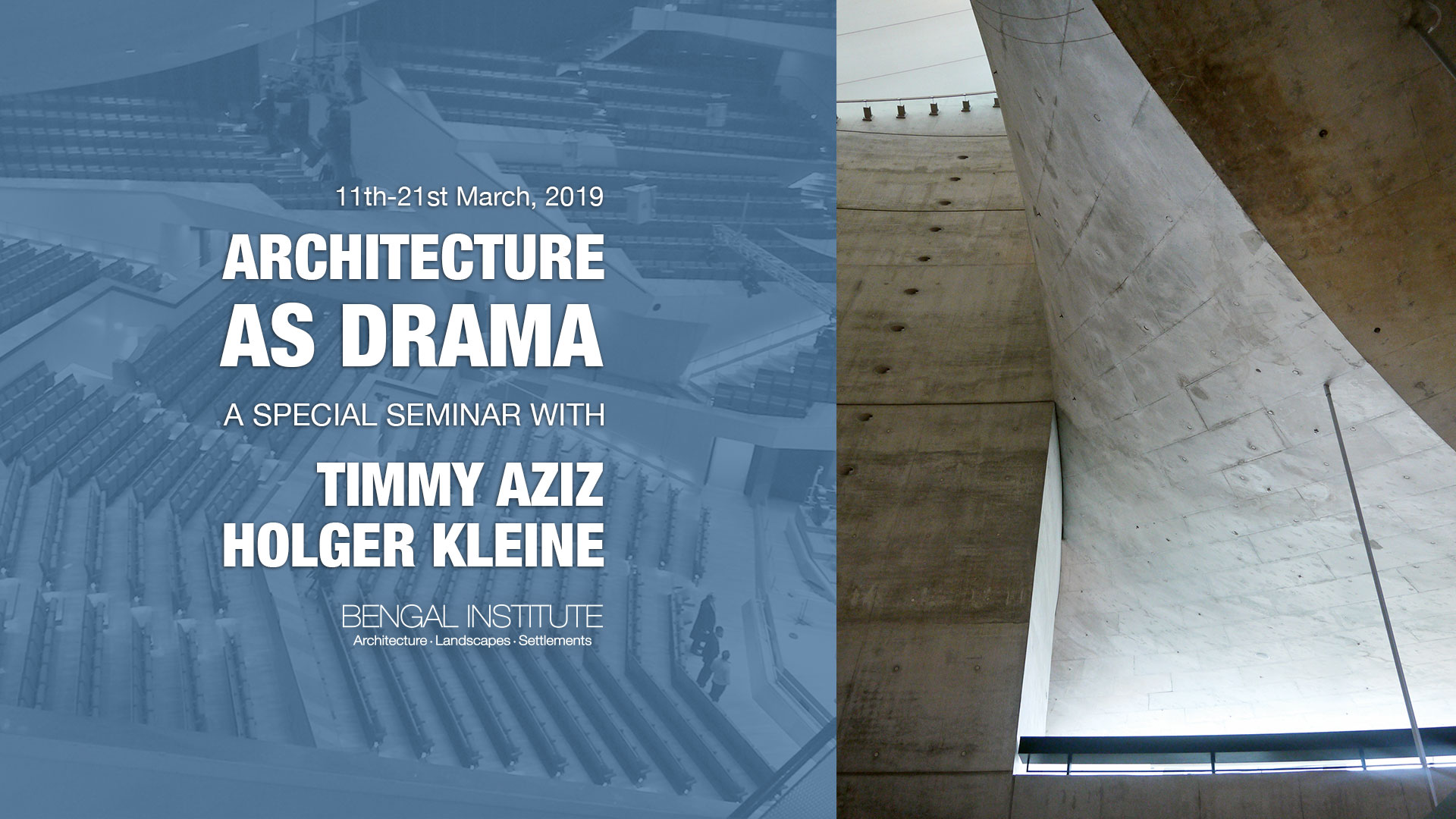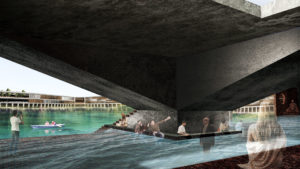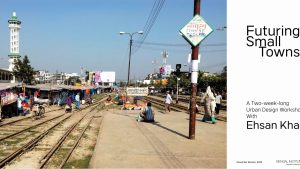
Architecture as Drama: March 2019 Session
Mon 11 Mar - Thu 21 Mar' 19
Seminar at the Bengal Institute with Holger Kleine, HSRM, Wiesbaden/Germany, and Timmy Aziz, MICA, Baltimore/USA
To understand Architecture as Drama means to analyse both the affects spatial experiences arouse in us as well as to study the architectural conditions stimulating this affect. The following five questions could be regarded as the underlying questions of all dramas regardless of discipline:
- How does the work of art (and architecture) arouse our curiosity?
- How does it keep our attention?
- How does it reach a satisfying conclusion?
- How does it maintain a sense of inner coherence?
- How does it kindle a desire to repeat the experience?
The seminar demonstrated that it is the specific configuration of parameters such as e. g. the type of drama or the body-space relationships or the light-conditions which form the character of the architectural piece and the intensity of the affect it stimulates.
The tools and a general typology of architectural dramas are developed in Holger Kleine’s book The Drama of Space. The tools’ relevance were exemplified in lectures and discussions with diverse examples from different epochs and regions but ultimately also tested and developed further via experiencing and interpreting paradigmatic spaces in Dhaka. A key analysis of the seminar was that of Hatirjheel; which was studied with parameters drawn from the seminar.
The knowledge gathered was applied in a collaborative design studio where each student developed specific parts of a design proposal which in a second step will be incorporated into a collective design and thereby develop a design proposal for a new type of urban hall. The programming and the spatial dramaturgy developed in the seminar reevaluated and responded to specific spatial qualities of Dhaka City and its inhabitants. It is evident that a deeper understanding of these phenomena are not merely theoretical questions but shape and enrich our everyday experience of architecture as well as our capacity to design our environment.
Short link to this page for easy sharing: http://bit.ly/BIMar2019
Link to the article published by Daily Star on this session.
Faculty
Participant's Works
Upcoming Program
Current Program
Past Program
Publication








